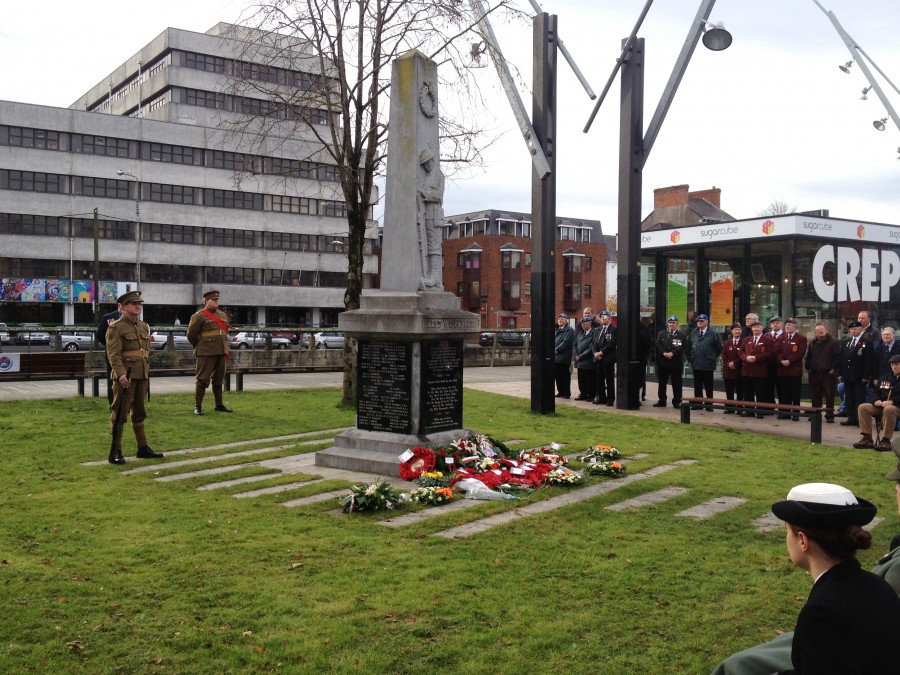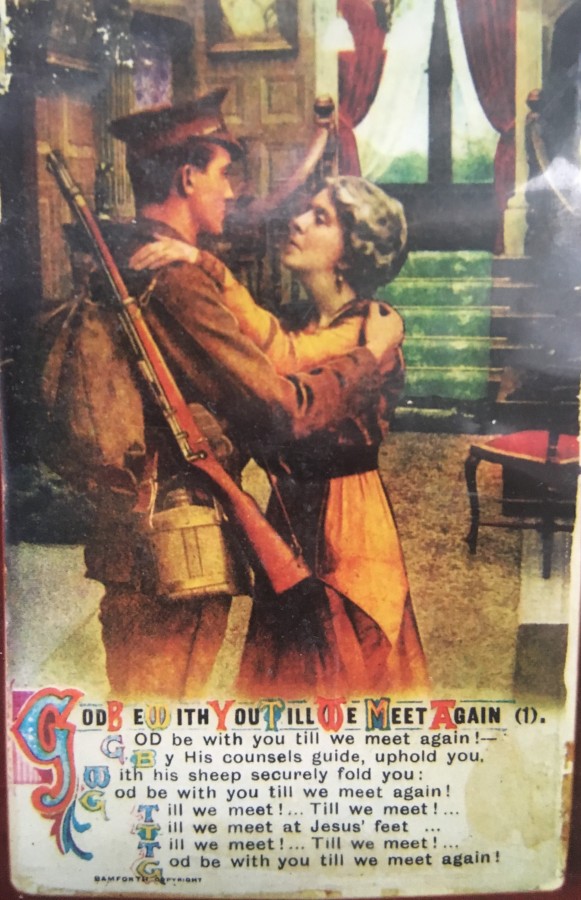Lord Mayor,
Can I thank the CE, the Finance Officer John Hallahan and Cllr Martin, the chair of the Finance Functional Committee for their work on this draft annual budget book.
History is being made this evening as this marks the last budget of over 60 years of the city in its current size. But within the word history are the words Hi Story. And the realities of our future story are mapped out in this document this evening.
At the 2020 budget meeting next November 2019 the members of the Council will budget for 210,000 people and a city five times more in size with more challenges and more calls for funding. This City is ready to take on the challenge of an expanded city. I firmly believe our directors of the various service directorates are ready for the transition and added work. I might clash with them at times and call for more from them on certain elements, but I always respect their frankness and honesty on what can and can’t be done whilst outlining their pride of their staff and their vision of the future.
Reading through the various sections you can see the strengths of our directorates and the ongoing work programmes – the 30 per cent of our income spent on Housing with several hundred social housing constructs coming on stream in the next two years – 17 per cent on roads with several construction and enhancement projects ongoing.
I have been vocal that our staff at the housing desk everyday at reception, community wardens and homeless outreach team are collecting the voices of citizens and acting upon them for those who need support in the accommodation sector. I do believe that once the city expands that much work needs to be done on where we can build mixed housing projects.
On roads, I believe firmly that the city has seen nothing yet in terms of traffic problems as the economic bounce continues to reach citizens on the ground. I am content that we are on the right track regarding our mobility measures but I am going to take this opportunity this evening to re-iterate strongly my call for more parking incentives and marketing measures. It has also become clear that there has been a break down in communication between the small trader and the Council, where much work needs to be done to resolve it.
When you read through service divisions such as water services – you can see the extent of the drainage operation and maintenance, you can see read about the economic development programmes and the depth of the EU programmes we are part of.
I have been vocal that this city needs to be more aware of its southern capital position and being a European Regional Hub. So I am proud that members of staff have got stuck into a range of Interreg projects from start-ups to social innovation plus from a budget perspective the added funding the city can garner from EU urban funding projects.
In environmental services, a glance through the draft budget you can find out about waste planning, recycling measures, the great work of the Lifetime Lab Education Programme and Fire Department. I think sometimes we don’t always state that this is a budget not only about services but a budget for those who carry out tasks and who want their wish list answered.
In recreation and amenity, you can read about our tourism projects in Elizabeth Fort and Shandon, the myriad of festivals, arts projects, libraries projects, capital park projects. I have been vocal to get Tramore Valley Park open plus have a strong Urban Forestry programme. I am happy that we are edging more and more towards them.
And you can also read about agriculture, health & welfare and aspects such as our ongoing work on the expansion of the boundary.
Indeed, from this budget document you can see the range of work that Cork City Council does to make a living city – it is clearly outlined in this document this evening. It is a very difficult task to respond to the myriad and myriad of asks of customers and citizens. Those in the County suburbs worried about inclusion in the city can from this document see clearly that Cork City Council has a vision. We have the ambition. We have the work ethic. Ultimately, using our own wordage, We Are Cork. However, with that accolade comes much work and responsibility especially with the new canvass of satellite county areas entering Cork City next year.
Thanks.
Ends.

Kieran’s Our City, Our Town Article,
Cork Independent, 15 November 2018
Stories from 1918: Lest We Forget
“The armistice with Germany was signed yesterday morning, and as the terms of the truce preclude the possibility of a resumption of hostilities, the world again enters on the paths of peace. After the appalling years of slaughter, of devastation on and, and of revolting massacre at sea, mankind cannot but find relief in the news that the greatest war in the world’s history is over. The tragedy that convulsed continents has taught many lessons” Editorial, Cork Examiner, 12 November 1918, p.4).
The cessation of hostilities on the Western Front of the First World War took effect at eleven o’clock in the morning—the “eleventh hour of the eleventh day of the eleventh month” of 1918. The armistice was signed between the Allies and Germany at Compiègne, France. Relief abounded for the families of those soldiers who had made it to the end of the war alive – but vast grief over-shadowed the celebrations, which is played out across British and Irish newspapers of the day.
The figure of 49,435 war dead is the one adorned on the Irish National War Memorial, at Islandbridge in Dublin based on the Irish Memorial Rolls drawn up after the war. Unfortunately, the rolls are full of discrepancies. They detail all those who died in Irish regiments, but many of those soldiers were not Irish, and many Irish who died in non-Irish regiments are not recorded.
The Irish Memorial Roll lists 4,918 dead from Dublin, but First World War scholar Tom Burnell says the true figure is 8,479. Similarly, the official figure for Cork is 2,244, but he puts it at 4,338. Similarly, crucial work in the book A Great Sacrifice (2010, edited by Gerry White and Brendan O’Shea) reveals an under estimation of total figures. When the war ended in November 1918 the Royal Munster Fusiliers had suffered around 2,800 killed with thousands more wounded and the regiment had been reduced to its two regular battalions, a reserve battalion and two garrison battalions.
The other element at play was how to bring the thousands and thousands of soldiers home. The House of Commons on 14 November issued a report detailing the vast swathes of soldiers trying to come home to Britain and Ireland. The report notes that it was impossible to say what was the number of prisoners of war who had found their way to Holland in just three days, but possibly it was in the thousands. Circa 30,000 full kits and 30,000 rations were sent to Holland and all Red Cross workers, voluntary aid detachments, and medical-personnel in Holland were to be retained there in case of emergency. Besides such ships as were available Westminister were sending ships capable of carrying 9,000 persons.
Similar arrangements were being made in the case of Denmark. As regards kits and rations. It was hoped to affect the repatriation of all prisoners from that country by neutral ships. Steps had also been taken to secure the return of prisoners from Switzerland. It was thought possible to secure the return of other prisoners directly across the lines in France and Belgium, and instructions had been given to facilitate their passage to the Channel ports, and to do everything possible for their comfort on the way. The whole question of interned prisoners in Germany would be dealt with under the armistice conditions by an International Conference.
As to the prisoners in Austria, the Italian authorities had been asked to make arrangements to secure their speedy return. In the case of prisoners in Turkish hands, Admiral Calthorpe of the Mediterranean Fleet had been asked to appoint a committee of three to attend to their requirements and secure their repatriation. The great bulk of these would be assembled in Smyrna and sent through Italy and France.
All combatant prisoners of war on arrival in England would be sent to reception camps where they would receive medical attention. Arrangements were made to give them leave as soon as possible. Other arrangements would be made for civilian prisoners. In the Cork context, many soldiers returned to Cork with no jobs to return to. Many enlisted in the Cork Branch (established December 1917) of the National Federation of Discharged and Demobilised Sailors and Soldiers. The Federation’s principle aims were to secure pensions for wounded ex-servicemen from Government and to promote legislation for them.
On the western end of the South Mall is a memorial to those Irishmen who died in the First World War. The unveiling of the Cork Great War Memorial erected by the Cork Independent Ex-Servicemen to the memory of their fallen comrades, took place on 17 March 1925. The ceremony was performed by General Harrison, the late commanding officer of the Royal Munster Fusiliers’ Depot, who took the salute from the foot of the Memorial. Many thousands of ex-servicemen, and widows and orphans of the men in whose honour the memorial was erected, were present at the ceremony. The day’s programme was an elaborate one and opened with parades of Ex-Servicemen at eleven o’clock. The two organisations in Cork—the Cork Independent Ex-Servicemen and the Cork branch of the British Legion participated. The memorial is carved in relief on a modest limestone obelisk, sitting on a plinth, is the profile of a Munster Fusiliers soldier in full military uniform, head down, gun at rest.
Kieran’s new book, Cork in Fifty Buildings (2018, Amberley Publishing) is now available in Cork bookshops.
Kieran is also showcasing some of the older column series on the River Lee on his heritage facebook page at the moment, Cork Our City, Our Town.
Captions:
972a. Commemorations at First World War One Memorial, South Mall, 11 November 2013 (picture: Kieran McCarthy)
972b. First World War Postcard from A Great Sacrifice (2010) edited by G White & Brendan O’Shea (source: Local Studies, Cork City Library)


